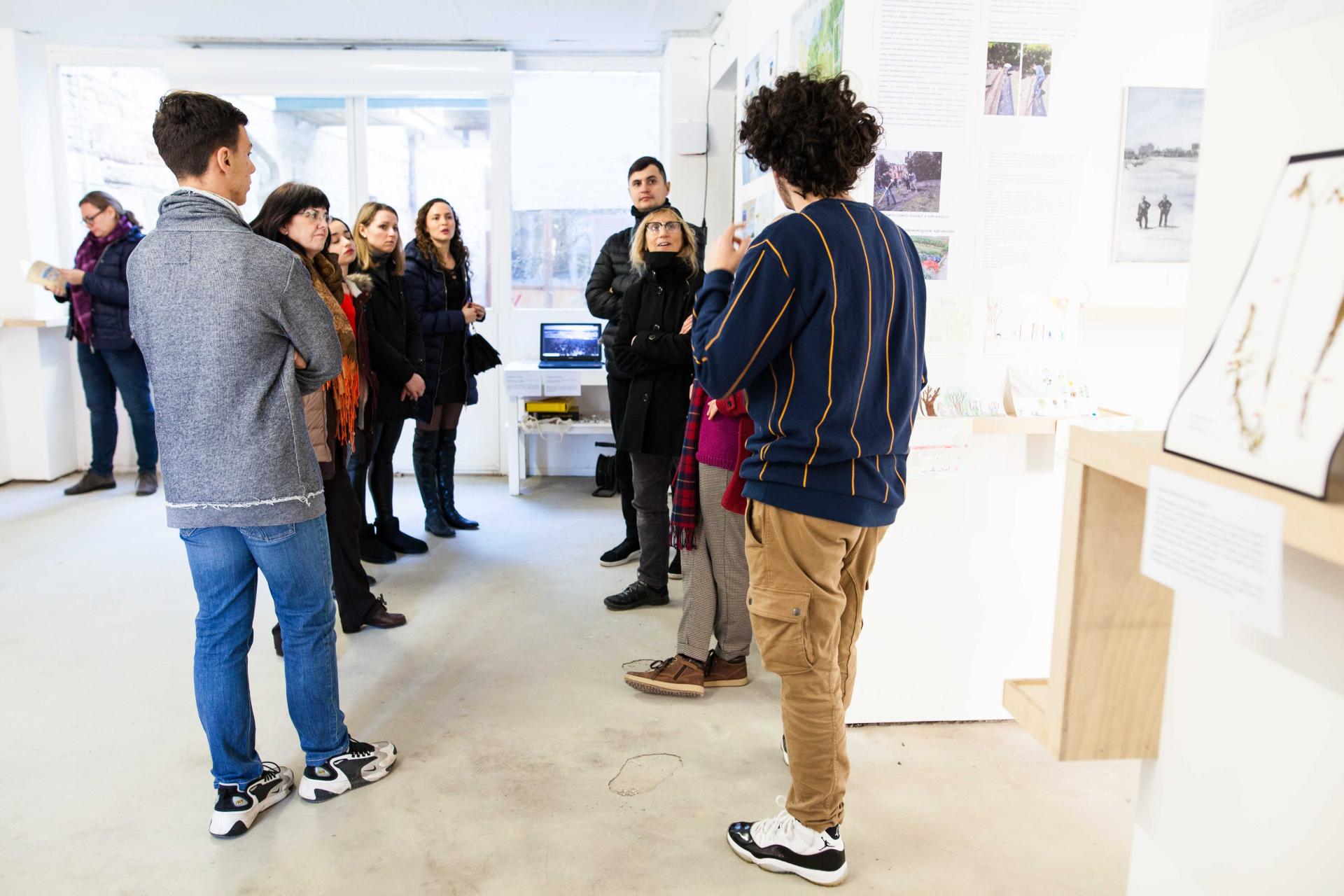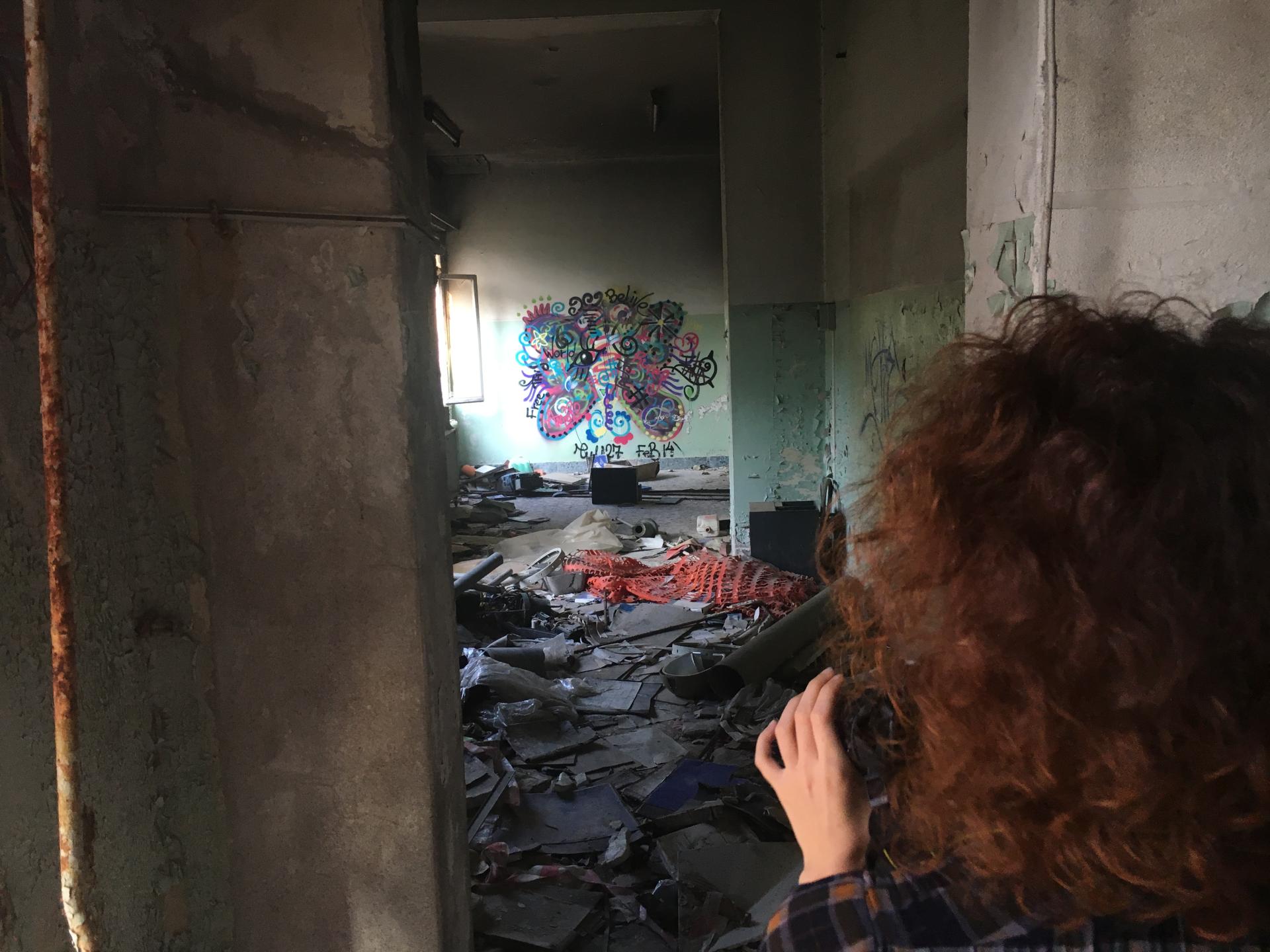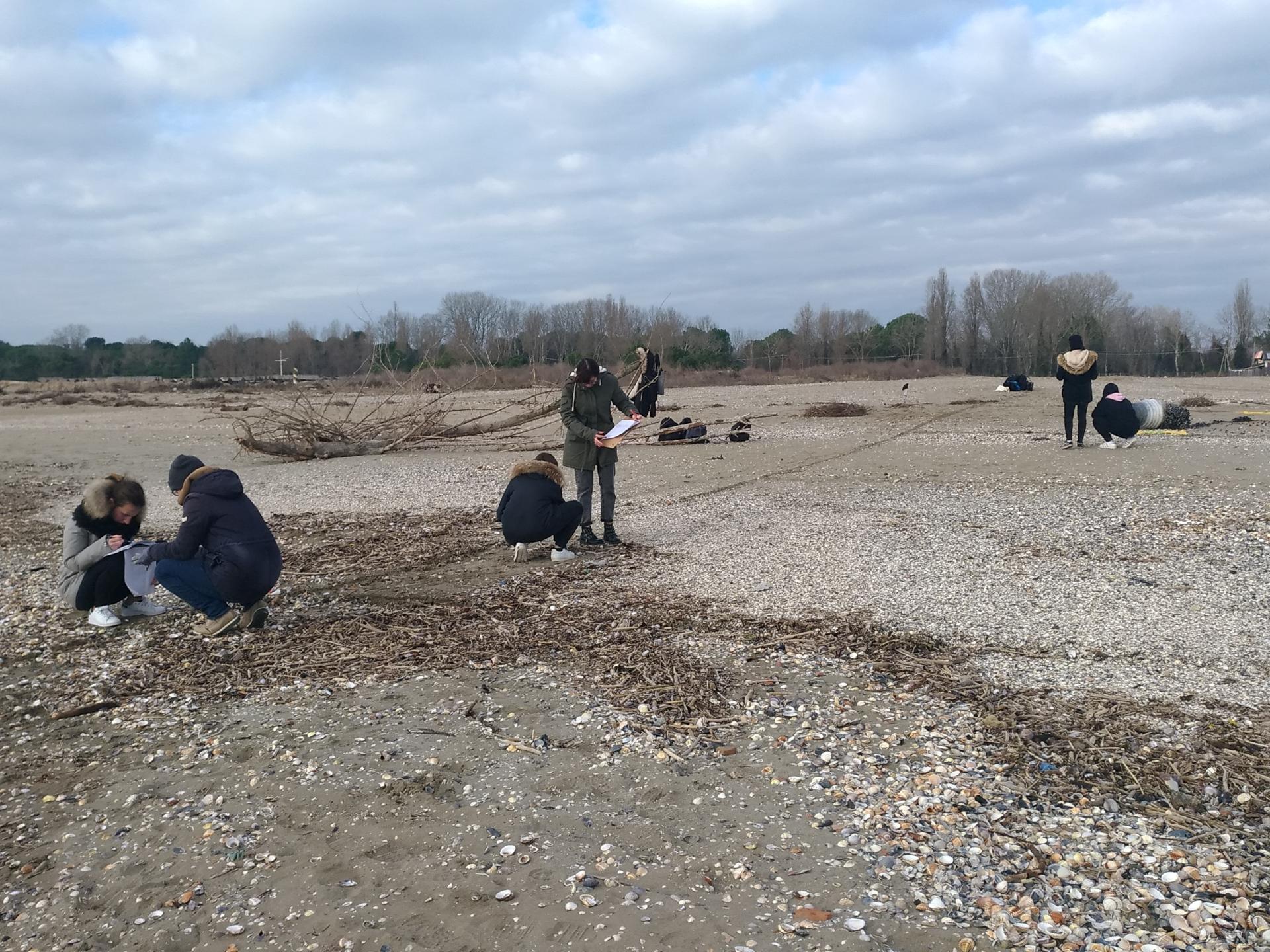didactics in the field
Basic information
Project Title
Full project title
Category
Project Description
the project is an experimentation in the field of non-formal learning in the Venice area. It focuses on the dimension of relationship-collaboration, of artistic re-elaboration as tools to try to build conditions and skills useful for moving in the complexity of the contemporary urban context.
acts on the territory through educational practices considered as spaces for the construction of tools for reading and analyzing the territory and forms of intervention on it.
Project Region
EU Programme or fund
Description of the project
Summary
This project is part of the current contemporary trend of research and experimentation with new tools and methods of intervention in the urban context. These are considered capable of relating and responding to the dimension of complexity that characterizes the contemporary city.
This historical moment of crisis and questioning of the cultural and value paradigms on which social and territorial assets are based is characterized by environmental and social challenges highlighted by the current health emergency. This setting requires innovative educational models
The project is rooted in a doctoral research about the tensions, impulses for change and forms of defence of the right of fruition and collective production in the urban context of the city of Venice. The research has developed between 2012 and 2016, witnessing the evolution of in-field educational paths based on the direct relation with the territory.
It is set in the Venice area, a context where in the last thirty years, the effects gentrification are visible in the increase of the environmental risk, in the erosion of the historical and architectural heritage, of the public services and of the social fabric, challenging the living conditions of the citizens.
The project is set in the Lido and San Basilio areas and is realized by considering the school as a potential resource for the transformation of cultures, values and processes that define the configuration of the territory, and the conditions of access to services and resources on it.
It looks at the territory as a learning and experimental environment. It focuses its attention on fragile and marginal areas, on the urban voids and on the “fabric of places” around the schools, identified as a resource to start a processes of rewriting of the territory, as surfaces to experiment collective styles of management and planning of the territory and new shapes and places of learning.
Key objectives for sustainability
The project is developing in these two territorial contexts through the launch of in-field educational paths conceived as spaces for learning, for the construction of observation-analysis tools of the territory in the environmental, social and historical spheres, and as transformative actions on it.
In the Lido di Venezia area is focused on a large abandoned area that was for a century a health centre of excellence.
In the San Basilio area, the project focuses on the territory around two schools, considered as a resource for spaces and relations to start a slow rethinking and rewriting of the area.
The project sought, through the paths activated, to nourish in the students involved and in the community in which they live, a new awareness of the territory and of its value and an attitude of care of it and participation as co-authors in its construction and transformation.
It has tried to spread cognitive and observational tools of the territory, starting from the schools, and accompany the community in their use.
Towards this goals, between 2015 and 2018, eight schools of different grades in the Lido area were involved in ten study-observational paths around the abandoned hospital area.
Through the production and dissemination of observations, textual interventions, videos, these itineraries have contributed to the protection of the structure and of its landscape.
In the San Basilio area, three study paths have been launched since 2017, drawing from the experience gained in the Lido context.
Their aim was to identify, analyse and recover underused green areas, in order to return them to the public use and to support the expansion of the network of areas dedicated to the agricultural self-production, as started in recent years by civic associations.
The courses is opening the schools to the opportunity to experiment themselves as laboratories for the implementation of new methods of action in the community
Key objectives for aesthetics and quality
The project developed by integrating environmental, social, historical and artistic approaches to combining, in the study paths and in the transformation process that they activated, the emotional sphere and of the personal experience, the perception af the aesthetic component of the territory as a factor of health-well-being, as an essential element in the evolution of those who live there.
As an example, the analysis and observation of the landscape around the abandoned hospital in the Lido of Venice involved the schools in botanical surveys and in observational activities through photography, painting and video.
In 2018-2019 a process of cooperative construction of a video narration about the landscape of the stretch of coast in front of the abandoned hospital was developed by a group of students from the Liceo Artistico Statale of Venice.
The project has been an effective tool for initiating a process of rediscovery of the territory, through the observation, documentation, narration and dissemination.
In the same year a project of pictorial rendering of the plants and herbs found on the same stretch of coast was started as an attempt to highlight the richness and beauty of the natural life in the area.
In the pictorial tables the eye explores the landscape in an emotional dimension, which refers to the nature as a living organism in a constantly changing relationship with the humans which inhabit it.
Relevant in these directions is the launch of exhibition moments of the outcomes of study paths and artistic reworkings conceived as an opportunity for immersion in the landscape through the composition of the three glances.
These observational and artistic activities have been a vehicle and an amplifier for the frames of knowledge produced in the projects.
They promoted an understanding of the value of the area, the debate about the future of the city and the involvement of students and inhabitants.
Key objectives for inclusion
The project has moved and still moves by building and consolidating relationships on the territory, starting from the schools conceived as potential centres of gravity of territorial nuclei, experimenting socio-educational practices capable of entering into synergy with the territory, and initiating a change within it.
It recognizes in the construction of a field of collaboration, co-responsibility, sharing and exchange of resources between school and territory a viable way to mitigate conditions of fragility and social marginality.
In this perspective, in both areas of intervention, it placed at the centre the recovery of areas of territorial fragility and marginality as a key to trigger processes of construction of inclusive contexts, propellers of new relationships, new projects, styles of existence, in particular with respect to fragile sectors of the population.
The project has acted and continues to act according to a logic of micro interventions matured through a deep immersion in the territory, moving istarting from the people and the resources immediately accessible to them.
In the San Basilio area, the recovery of connections and relationships between neighbouring contexts that were initially non-communicating, and between the territory and schools starting from the care of underused green areas has led to the definition of a community of interest around their conservation.
In this community those involved have the opportunity to increase their relational capital, to access new spaces of social life, of mutual learning, of cultural production, experimenting relationships of mutual support.
In the context of the Lido, the abandoned areahas become for a period , through the stratification of practices, experiences and relationships, a place of experimentation and expression of new styles of social life that do not find opportunities for surfacing elsewhere.
Results in relation to category
In the Lido area, the study paths developed by facing a territorial issue that led to an understanding of the framework of processes, factors, interdependencies at its origin.
Have initiated styles of learning that proceed by the sedimentation of experiences rather than by transmission, a process in which the teacher takes the role of mediator and "guide" during an experience.
In the San Basilio area, the rediscovery and recovery of neglected portions of the territory,
have all been educational practices and innovative styles of intervention and transformation of the territory.
These innovative styles have been built together by students, teachers, and other agents active in the area and have become activators of a process of redefinition of the spatial and relational assets of the area .
In both the areas, the immersion in a territorial context has placed the schools involved in a condition of active participation in a collective process overcoming the traditional frames of meaning within which they usually organize their actions.
Working in the field is slowly fuelling forms of production-application based on the practice of the territory, on choral construction, on collaboration, on the exchange of experiences, knowledge, resources, rather than on the assimilation of information.
It is giving rise to experience-based styles of learning, born and evolved within a participatory framework, through a sedimentation and stratification of experiences.
They involve, starting from the schools, the communities towards regaining their wisdom for the production of environmental and territorial quality.
This process of in-field activity has activated, bring to the surface and put to work the potentials and resources inherent in the school, but that are usually unexpressed. and
can be considered opportunity to extend the space of intervention of the inhabitants on the dynamics that influence the conditions of existenc
How Citizens benefit
The project has involved and is involving associations, citizens, students, teachers in the planning of the study paths and of the intervention in the territory, in their ongoing re-adaptation during the realization phase and in the dissemination of the frameworks of knowledge produced.
The subjects involved take part in the paths by participating in the recovery actions, in the development of urban agriculture, in the connection of networks, in the production of observations and reflections, in the construction of an operational field of mutual learning in which individual resources can be integrated with those of others.
Through their involvement they acquire over time the ability to read the territory, to elaborate possible visions and solutions in relation to the fragility with which they are faced.
They make choices, identify, activate, combine and connect resources in relation to a shared goal: to plan together.
All these aspects contribute to the consolidation and expansion of the project beyond its origins towards other areas of the urban context.
They also nourish minimal but relevant changes, by improving the life conditions of the subjects involved and of the communities in which they are implemented, through the recovery and reactivation of unused areas, the launch of new spaces and new styles of social, cultural, relational life and mutual support, the increase of relational and cognitive resources extending their opportunities for action and choice.
Innovative character
The project can be considered innovative in the overall vision that animates it and which looks at the school and at the territory as mutual resources for change.
A vision that facilitate the activation of the potential inherent school and territory (spaces, relationships, knowledge, experiences) and put them to work in experimenting with new styles of learning and action-intervention in and with the territory.
The paths in which the project is moving arise from this vision and constitute a way to concretise and develop it by involving young people and communities, setting them in a dimension of collaboration, shared experience and intergenerational cooperation.
In this dimension relationships and practices of recovery-reuse can facilitate the creation of a capital of resources that the project can continue to draw on over time in order to evolve.
The project is trying to initiate a change of perspective: from value and exchange on a monetary basis to value and exchange on a relational basis.



